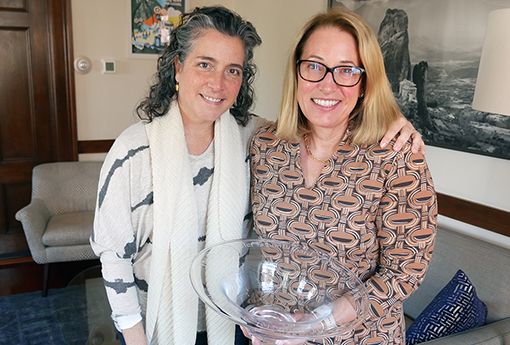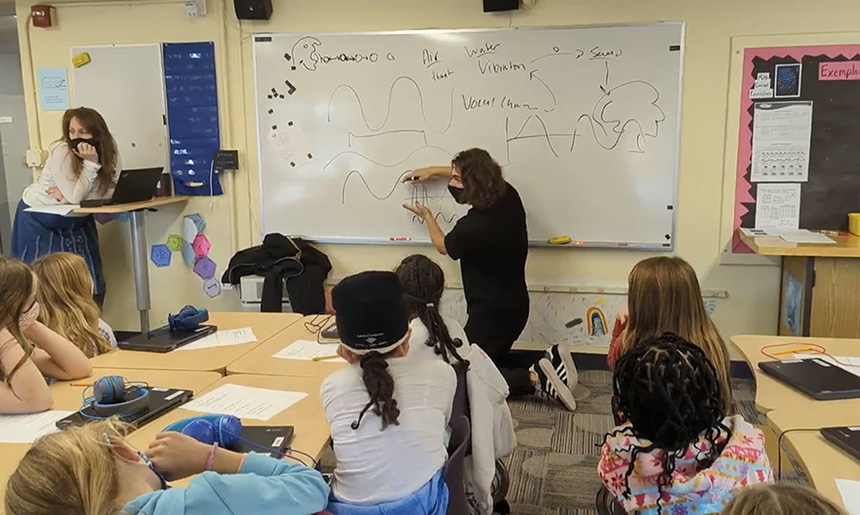
Sound Off! (Or, in This Case, Sound On!)
December 8, 2021
It’s not everyday that students receive praise for making noise, but that’s exactly what Wheeler 4th-graders experienced as part of their Waves of Sound unit. Students gained first-hand knowledge of how the brain processes sound, and they even had the opportunity to make their very own sound effect.
Aerie Teacher Travis Dumais teamed up with Lower School Science and Math Teacher Julie Abodeely to turn the class idea into a reality. The pair have been working together for about two years, and they are aiming to connect this unit with a neuroscience lesson later in the school year.
“I wanted students to study the brain in particular because I wanted kids to understand their own behaviors,” Abodeely said.
As part of their studies, students focused on how the brain interprets sound waves. Dumais, who plays synthesizers and teaches Upper School students how the brain decodes sound, jumped at the chance to give younger students a unique learning experience.
“I offered to bring my synthesizer in and have them design sounds and have it work almost like a precursor to understanding how certain brain waves work,” Dumais said.
Students used their laptop computers to measure the sound of their own voices and gain a better understanding of how the brain interprets sound and music. Abodeely and Dumais presented concepts like hertz, decibels, and other sound fundamentals.

Abodeely said the course allows students to learn about sound in a three-dimensional way and better understand the taxonomy behind synthesizing sounds and how the brain reacts to them.
“I love the idea that we can tie physical sciences to life sciences and biology,” Abodeely said. “Research shows that when children make such connections, they learn more comprehensively.”
The teachers complement each other with their unique blend of experience and pedagogy. Abodeely guides the class and their understanding of the material, while Dumais brings his own content and knowledge regarding sound engineering. He also demonstrates this through an interesting piece of technology: a Korg Minilogue polyphonic analog synthesizer. It’s a device that offers a level of authenticity not only for the student experience, but for Wheeler’s curriculum overall.
“Not too many schools are bringing in a legitimate piece of technology like this for their classes,” Dumais said. “These devices are also used in modern music, film, and other mediums, as well. They’re learning not just how sound works, but they’re also creating their own sounds and seeing how something like music might be created.”
Students used the synthesizer to create their own, unique sound and viewed the resulting waves through its built-in oscilloscope. Peppin Benzak ’30 said she enjoyed the process of choosing two pitches and two soundwaves and combining them into her own creation. She’s also looking forward to hearing about how other animals interpret sound waves.
“I’m most excited to learn about blue whales and how they use sounds to communicate with each other,” she said.
Abodeely and Dumais are pleased with the results but say there will be more room for experimentation in the future. Dumais said adding more synths or instrumentation could even allow students to make a short song, and Abodeely said the potential exists for even greater connections across different sciences or subjects.
“We could perhaps add in artistic elements to help foster different modalities of learning,” Abodeely said. “When you see those lightbulb moments happen for these kids, it really is the most powerful thing.”

